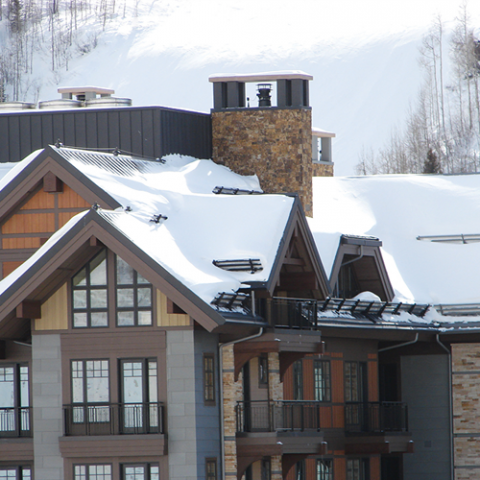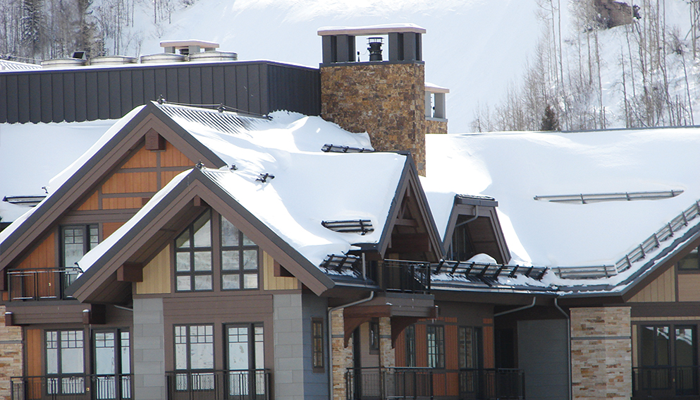Icicles and ice dams can be both hazardous and costly to roofs during winter months. While there are various different techniques to de-ice roofs during heavy snow and ice conditions, concealed system are often a more effective choice.
How Do Icicles and Ice Dams Form?
During heavy flurries, snow accumulated and traps heat from the building. Snow melts at the roof interface due to building heat and solar radiation. Water flows through the snow to the eave edge and freezes forming an ice dam. Ice retains the melt water, creating a larger ice dam and icicles. When the ice dam forms on the roof, water can back up behind it and remain in liquid form. As the water continues to build, it can work its way through cracks in the roof and cause flooding issues and mildew problems. This is not the only safety and cost risk. Ice dams significantly increase roofing loads, which can cause structural collapse.
How the Concealed Roof System Works
A Roof Ice Melt (RIM) system is an engineering solution that can prevent the buildup of ice and snow on roofs. These systems are comprised of a few parts, including:
- Self-regulating cable: provides a high power output for heavy snow load areas.
- Panels: designed for eaves, valleys, channels, rakes and flat roofs.
- Accessory components: when required.
- Control system: an energy-efficient system with BMS (building management system) communication capabilities.
When put together, the RIM system allows a continuous path for snowmelt to drain from roofs through the gutter or downspout. These systems are highly effective in both commercial and residential applications.
What Types of Roofs Work with RIM Systems?
Typical RIM systems work with a variety of roofing materials, including:
- Roofs made from shake, shingle, rubber, tars, wood, metal and plastic.
- Gutters made from materials including metal, wood and plastic.
- Downspouts made from materials including metal and plastic.
Regardless of the material or shape of your roof, there should be a RIM system solution that can be installed.
Building a Concealed RIM System
While the process for installing a RIM system at your home or business may differ from project to project, there are some standard steps that will put you on the path to a safer roof this winter.
First, our Winter Experts will need to evaluate the situation with both job site visits and architectural drawings. Things like the layout of your roof, elevation levels, and the annual roof snow accumulation where your building is located will need to be determined before any design can be started.
When this is complete, a design can be prepared and the RIM materials can be fabricated.
Then, engineering designs and installation instructions will be created and the patented RIM materials are supplied.
Benefits of a Concealed De-Icing System for Roofs
While the main benefit of a concealed RIM system is the elimination of icicle and ice dam problems, there are many others.
A concealed RIM system is a one-time, maintenance-free solution for winter weather problems. Installation is relatively simple, and these systems do not require annual maintenance.
The system is also energy efficient and doesn’t rely on a glycol-water mix to melt ice, therefore reducing environmental concerns. Our state-of-the-art control systems are designed to provide ground-fault protection to circuits, optimizing the energy requirements for the system.
Finally, the concealed RIM systems are aesthetically-pleasing and often can’t even be detected on roofs and gutters.
Are you ready to learn more about how a concealed RIM system could work for your home or business?
Connect with an nVent RAYCHEM Winter Expert today, and get the process started.



